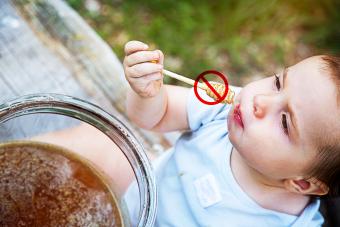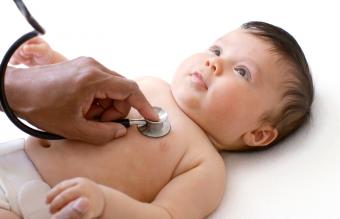
Sleep apnea in infants occurs in full-term babies under the age of one year and is also a risk for infants born before 34 weeks of pregnancy.
SIDS and Sleep Apnea in Infants
When babies sleep, unexplained lapses in breathing known as apnea lead to a diminished oxygen supply to the brain and heart and can cause Sudden Infant Death Syndrome (SIDS). This tragic syndrome is the leading cause of death among infants ages 1 month to 1-year-old. Although research has made progress, SIDS remains capricious. Current recommendations to reduce the risk of SIDS for your infant include putting babies under the age of one to sleep on his or her back. If SIDS can be avoided, infants experiencing sleep apnea usually grow and develop normally. Most children are believed to be out of danger of SIDS between 6 months and 1-year-old, but the peak for sleep apnea in children is age 2-5 years.
Snoring and Sleep Apnea
Snoring is one symptom of sleep apnea in infants and worth mentioning to your pediatrician. If a baby snores, it could by a symptom of obstructive sleep apnea. This means that your baby experiences a prolonged partial blocking, or sporadic breathing while they sleep. The cause of this irregular breathing is often caused by enlarged tonsils or adenoids.
Babies with sleep apnea don't get sound sleep, and their intake of oxygen is below an optimal level. The negative effect on a child's intellect and behavior is often misdiagnosed as a behavioral disorder like ADHD.
Other Symptoms
Other than snoring, other symptoms of sleep apnea in infants include:
- Mouth breathing
- Restless sleep
- Difficulty paying attention while awake
- Antagonistic, hostile, or other oppositional behavior
- Restlessness while awake
Premature Infants and Sleep Apnea
Sleep apnea in premature infants is known as AOP. When a baby is born before 34 weeks of pregnancy, immature development of the brain or respiratory system often hinders the body's ability to regulate breathing. Recommended safety measures for premature infants include:
- Keep infant's head and neck straight
- Place infants on their backs to sleep
- Use of medications to stimulate the respiratory system
- Use of CPAP
Respiration Monitor
If you think your infant may have sleep apnea or is at risk for SIDS, respiration monitors designed for use with infants are available. This specialized instrument senses minute chest movements brought about by breathing. If your baby stops breathing for 20 seconds or her respiration drops below 8 breaths in a minute, an alarm is triggered. This monitor not only records chest movements but also checks heart rate. Your health care provider will be happy to show you how to use the monitor. As an additional precaution, it is a good idea to receive training in CPR for infants.
Treatments
If sleep apnea is caused by enlarged tonsils and adenoids, surgery to remove them often restores your child's breathing to normal. Other treatments to treat an obstruction include:
- Using a nasal CPAP at night. This device delivers air through the airway with a specially designed mask.
- Supplemental Oxygen
- Steroids
- Antibiotics
On the Bright Side
After your infant has had a complete medical evaluation, if no cause can be found for apnea-this is usually called Apnea of Infancy. On the bright side, sleep problems resulting from this condition usually go away on their own, and Apnea of Infancy is actually considered part of a normal breathing pattern. If you think your baby has sleep apnea, be sure to talk to your doctor about it because most apnea cases are treatable or managed with monitoring devices, medication or surgery if they don't go way on their own..







